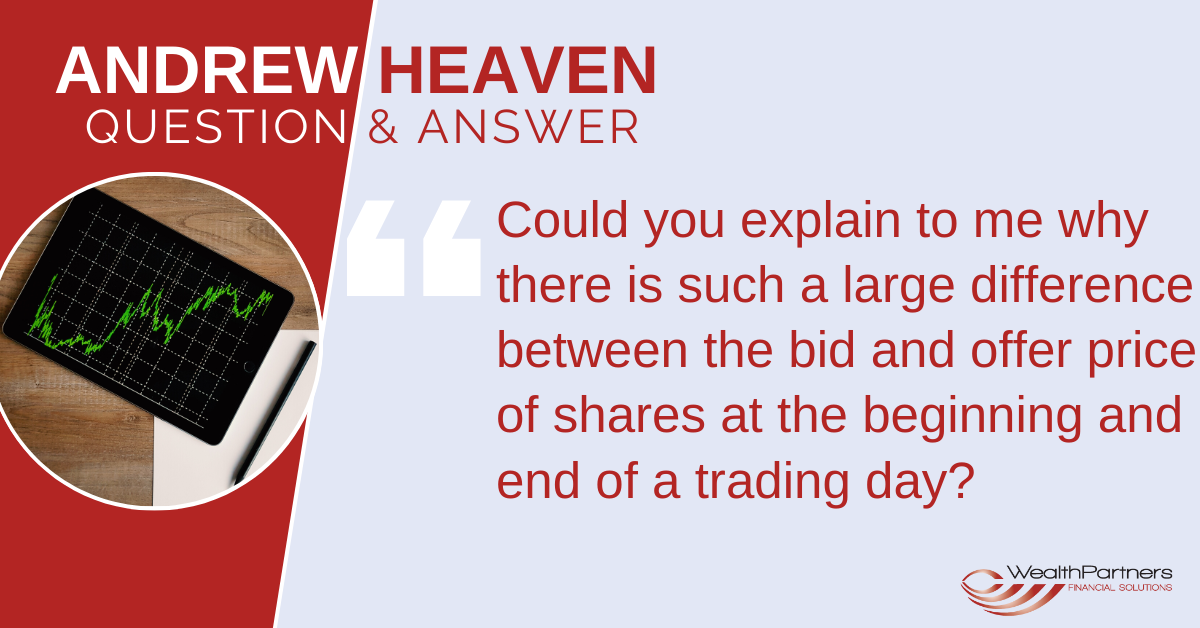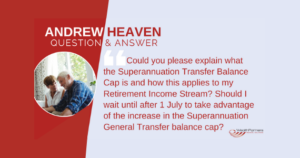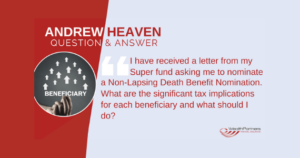Q: Could you explain to me why there is such a large difference between the bid and offer price of shares at the beginning and end of a trading day?
A: At the beginning and end of every trading day, there is usually a significant disparity in the prices being offered by buyers and sellers of shares. The prices are typically much greater or lower than the indicative opening or closing price shown on your screen. However, when the opening or closing trades go through, many of those orders have been filled and a significant volume of shares may have traded.
A ‘Bid’ is the price that a buyer offers when they want to purchase shares. The ‘Offer’ or ‘Ask’ price, is the price that a seller is willing to sell their shares. During trading hours, bids and offers will typically ‘meet’ one another and result in the share trade being executed.
Whilst buyers and sellers are able execute trades immediately at the prevailing market price when the ASX is open, there are two important periods where ‘auctions’ dictate the price that buyers and sellers will receive when a trade is executed. One is the first 10 minutes of the trading session and the other is the final 10 minutes of the trading day. An auction can also occur under a third scenario if a company resumes trading after a trading halt.
During the opening and closing ASX auctions, all bids and offers are matched up and the overlapping volume will be traded. The process for this involves a formula that weighs up the total volume on the buy side against the total volume on the sell side to calculate the mid-point price, referred to as the ‘match’ or ‘auction’ price for all shares sold.
The ASX market opens at 10am Sydney time, normal trading commences on a staggered basis according to their ASX code in alphabetical order. The first 10 minutes serve as the first auction period. Bids and offers may be submitted from 7 am and are queued in order of placement and price with the oldest offer having priority.
At 4pm Sydney time, the market will move into a second 10 minute auction period, beginning with a period called the pre Closing Single Price Auction (CSPA). This period allows orders to be placed, amended or cancelled. However, no trades will be executed until a random time between 4:10pm and 4:12pm, the CSPA takes place.
If there are no bids that meet the offer price of sellers, then no shares will be traded. If a buyer lifts their bid price to meet the offer price, then the trade will be done at the ask price. Likewise if a seller reduces their offer price to meet the highest bid price, the bid price is the price at which a trade will be executed.
Traders will bid for stock at a higher price than the indicative opening or closing price, or offer to sell stock at a price that is well below the expected auction price because of the way the overlapping volume is matched. These traders are at the front of their respective ‘queues’, which means that their bid or offer is executed first. Due to the formula, the trade may not occur at the price they have submitted but rather at the overlapping match price.
Whether you should place your bid or offer above or below the indicative auction price will depend upon how keen you are to buy or sell your shares.
If being at the front of the queue matters, priority is always given to those who ‘bid’ the highest or ‘ask’ the lowest. Even if you have an order first in the queue at a particular price, you could miss out on a trade because someone else who was prepared to bid a higher price or offer a lower price, despite the match price being the price you nominated.


